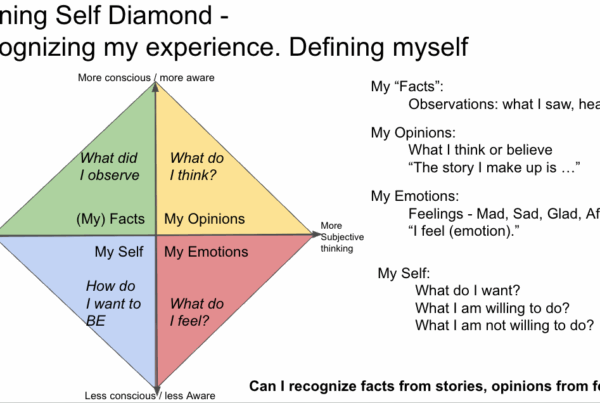
What does it take to change a relationship pattern? What habit research teaches about differentiation in relationships.
Why does it take time to change relationship patterns? Evidence-based insights.
Changing automatic relationship patterns typically requires months of consistent practice. Individual timelines will vary depending on the level of conviction to change, the intensity of the pattern, and how often it occurs. This evidence comes from a 2024 meta-analysis of habit formation research. It aligns with what Bowen Family Systems Theory has observed clinically for decades: defining self, the capacity to maintain a clear sense of self while staying emotionally connected, develops gradually through repeated practice in relationship contexts, not through intellectual understanding alone.
Research on health habits at a glance:
- Average time to automaticity: 106-154 days depending on behavior complexity
- Individual variation: 4 days to 11 months
- Critical success factors: consistency in stable contexts, self-selected goals, and preparatory habits
When people work on how they function in their relationship systems, they often discover that progress is uneven and slow. From a Bowen family systems theory perspective, this experience makes sense. People are trying to change significant patterns like reacting less to a parent’s criticism or taking clearer positions with a partner. Even simple tasks like taking medications, take time to become a habit. Why shouldn’t more complex behaviours take time. How can research help us understand this?
Understanding differentiation in relationship systems
Differentiation of self refers to the capacity to maintain objective thinking and a sense of self while remaining emotionally connected to important others. It involves shifting from automatic emotional reactivity (like distancing, conflict, and over-functioning) to more thoughtful responses bases on one’s principles. Our automatic reactions aren’t simply psychological choices we make in the moment. They’re deeply ingrained patterns of emotional functioning. They developed and were reinforced over years of interaction in our families, marriages, and workplaces.
Recent behavioral science research on habit formation offers useful insights that may provide guidance that supports changing our patterns in relationship systems.
What habit formation research reveals about change timelines
A 2024 systematic review and meta-analysis by Singh and colleagues, published in the journal Healthcare, examined 20 experimental studies involving 2,601 participants who were forming new health-related habits. The research team looked at how long it took for behaviors to become automatic. How long did it take to shift from requiring conscious effort and intention to become relatively spontaneous and effortless behaviour?
According to Singh et al.’s analysis, the four studies that directly measured time to automaticity found habits require two to five months of consistent practice before reaching that threshold. The average times ranged from 106 to 154 days depending on the complexity of the behavior involved. But perhaps most striking was the substantial individual variation: some participants formed habits in as few as four days, while others required nearly a year.
Success factors in habit formation
The research identified several factors that predicted success. Consistency and a stable context mattered more than intensity of effort. Self-chosen goals strengthened more readily than assigned ones. Habits practiced in the morning proved more durable than evening habits. Positive emotion about the behavior, specific planning about when and where to practice, and small preparatory routines (like laying out exercise clothes the night before) all supported the formation process.
These findings challenge the popular “21-day rule” for habit formation that has circulated in self-help literature for decades. Developing new automatic behaviors is not quick. It’s a gradual process of neural rewiring to support new behaviour that unfolds through repeated attempts in a stable context. But how can we apply this to relationship patterns?
| Habit Formation Factor | Relationship Pattern Factor |
|---|---|
| Self Chosen Goal | Defining Self on meaning issue |
| Consistency in a stable context | Find an identifiable situation and pattern |
| Morning vs. Eventing | Observe the level of other stressors |
| Preparing | Determine an alternative response |
Source: Singh et al. (2024), meta-analysis of 20 studies
Why relationship pattern changes take time
While defining self and habit formation involve different systems. Defining self is more emotional than the behavioral aspect of a normal habit. The research on automaticity may offer insights into why relationship patterns also prove so difficult to change. Bowen family systems theory describes mechanisms that parallel what habit researchers have found.
Automatic emotional reactions develop through repetition in predictable relationship contexts. For example, a person learns to distance when tension rises. Or they may learn go along in order to avoid conflict. These patterns, learned in our family of origin, serve adaptive purposes within the system. They maintain a relationship equilibrium and reduce tension in the short term. When someone alters their part in these patterns, the system (other individuals) may resist the change. This resistance is often automatic since it’s simply how emotional systems maintain stability.
Remember, the definition of a system is that when one part changes, the other parts will respond to that change. Emotional systems are no different; it’s just that we can’t always recognize the change in the other individuals of the system.
That the system reacts to change differs from normal habit formation. If you try to exercise more, your workout clothes don’t react to you. With normal habit formation, you only have to deal with yourself and not others. The other big difference with relationship patterns is that it’s hard to practice in order to get good. Most couples don’t want to argue ten times for hour, four times a week, to practice being less reactive. Yet this level of practice is what habit formation takes.
Another important difference is that regular habit formation usually involves a consistent level of effort. Relationship events can vary in intensity a lot. For example, deciding where to eat out differs from deciding what groceries to buy because of money issues. Intensity can be affected by your level of stress, the type of relationship and the type of event. For example, it’s the end of a long, tiring day, you’ve had a cold, and your teenage child tells you they failed a test at school. (Maybe you just won’t have the energy to be reactive!)
The individual model is the context for most habit formation. A systems context is different, because the system can resist change. Dr. Bowen observed that if your change in behavior represents a true defining of self, this will get a reaction from others. Working on your relationship with jogging is about you. Working on the relationship with your parents is very different. You will get a reaction if you are truly defining self in some area of that relationship. Any change in behaviour that represents a substantial defining of self in a relationship system will get a reaction. Even something like a new fitness routine, if it represents truly defining self in the relationship, can lead to a reaction.
There are significant differences when working to form a new habit in your relationship systems. Therefore, it can take more effort over a long period.
Defining self – creating a new habit
The habit research suggests three ideas that may help in our work to define ourself more in our relationships:
First, automaticity develops through consistent repetition in stable contexts. Brushing teeth becomes a habit through daily practice in the same bathroom. Managing one’s own reactivity in family relationships becomes more automatic through a similar process. Repeated, intentional efforts in the actual interactions where the old pattern gets triggered. In what situations (context) do you get more reactive? Can you find a more consistent situation to focus on and learn to recognize that?
Second, self-chosen goals increase persistence and success. Singh and colleagues found that habits people selected for themselves strengthened faster than habits assigned by others. This is what defining oneself is about. Defining self is for you, not others. What changes to you want to make because it’s important to you? The focus needs to come from your thinking about how you want to be in the relationship.
Third, emotionally neutral practice builds capacity. The research noted that morning routines and small preparatory habits eased the formation of more challenging behaviors. In relationship systems, comparable low-intensity practice can help build tolerance for the anxiety that accompanies change. Intentionally being a little less reactive, especially when reactivity is lower, is important. It creates the neural circuits that notice reactivity and shift to being less reactive.
Preparatory work involves defining how you want to behave in situations. For example, parents can often have an over helpful focus on a child. Consciously thinking about situations where you can let go of this overfunctioning would be good preparatory work. Think of the situation (context) and how you want to respond. Maybe you’ll say, “I’m sure you’ll figure it out,” or, “You got this”. Or maybe you need to remind yourself that they got this; let it go!
Think for a moment about your own automatic reactions: What patterns show up most consistently in your important relationships? Where might you practice a different response in less intense moments first, before attempting change in the most difficult interactions?
What to expect: the differentiation process over time
Understanding a timeline for developing new automatic functioning can help maintain realistic expectations and sustain effort during the predictable challenges of systems oriented change. You will go through the following phases.
The Recognition Phase: Change begins with observing the behaviour you want to change. Defining a specific pattern to observe marks the transition from general awareness to focused work. Getting good at noticing a pattern is the first step. When I began my work, I found I didn’t notice things until hours after the fact. That timeframe got shorter and shorter. Eventually, I could recognize a pattern as it came up and then I could interrupt it.
This recognition phase can bring increased anxiety. You might notice how automatically you accommodate your partner’s preferences while suppressing your own, for example. Thinking about not just going along may create anxiety. Change often involves some discomfort, so don’t let that stop you.
Early Repetition: According to Singh and colleagues, the largest gains in habit strength occur during the early repetition phase, yet this is also when the new behavior feels most effortful and inconsistent. In relationship systems, this manifests when deliberately choosing a different response in triggering situations. Examples could be, pausing before reacting or staying present when the impulse is to distance.
These early attempts feel awkward and require conscious intention. The old pattern remains the brain’s default, so mistakes will happen. You will miss opportunities. This is why having a replacement behaviour is very useful. I found that being clear about how I wanted to act in a situation was helpful. Telling my self, don’t do X, doesn’t tell me what TO DO. Planning to do Y instead of X gives the brain the direction it needs.
Emerging Automaticity: This is when you notice the new pattern feels more spontaneous and requires less deliberate effort. The pause before reacting becomes more natural. Staying connected under tension feels less forced. When the tension is lower, this is more likely. In more intense situations, the old pattern can persist. That’s because you haven’t practiced at a higher intensity. Be patient.
Consolidation: If you persist enough, at some point new functioning feels more like an inherent part of how you operate. However, there is an important difference here from normal habit formation. Emotional reactivity varies with levels of stress, stressors on the system, the importance of the relationship, and the importance of the situation. You will notice that it’s harder to sustain the new pattern when the emotional intensity is higher. You just need further practice.
How one does under pressure is an important measure of level of differentiation. A well-differentiated person can hold on to self even in very intense situations. At the same time, they can stay connected. Differentiation is a relationship process. Just be aware, that more intense situations are an opportunity to step up. However, I would NOT suggest that you create a crisis so you can practice!
Remember that you are changing the system by changing how you respond to it. Dr. Bowen wrote about how the system can push to have you revert to your normal pattern. This can make sustaining change harder. But he observed that the system will adapt if the individual stays the course.
Why change takes this long
Our automatic emotional reactions developed through years of repetition in stable relationship contexts. The neural pathways, the emotional expectations, and the reciprocal functioning of others have all organized around the existing pattern. When someone responds differently, all levels of the system require time to reorganize. This includes creating new neural firing patterns in you and others. It just takes time for the physiology to adapt.
The other reason is that we don’t have the chance to practice. Creating a new habit, a new pattern, takes consistent repetition. For example, if you want to stay less reactive, but connected to a family member, you have to connect with them repeatedly. If you want to distance less as part of avoiding conflict, experience conflictual situations. Who wants to practice that!
You are working to change yourself, not the system. Only you can change how you are in the system. You can’t fool the system into changing. All you can do is work on defining self and let the system do what it does. If you maintain your change, the system will adapt.
Making use of this research in your life
Start by picking one item you would like to change. Then just observe. How well can you recognize when the pattern happens? What is going on that gives rise to the pattern? Perhaps there is a feeling or some thinking that you can notice to alert you to the pattern. A medium level of intensity can be the easiest to notice. If it’s too subtle, you’ll miss it. If it’s too much, your automatic response will be too strong, and you won’t notice until after the fact. But that’s okay.
Progress is NOT measured by the complete absence of old reactions or anxiety, but by the increasing frequency of better functioning. Any amount of being less of what you don’t want and more of what you want is a win. Acknowledge that!
When professional support helps
Making these changes for more intense patterns can be hard. Working with a counsellor trained in Bowen family systems theory can provide a framework for this work. A counsellor can help you identify your patterns in key relationships. They will support you in defining areas for being less reactive and defining self more. Getting coached on the predictable ways that emotional systems resist change can be very helpful in not giving up. Finally, they can help you understand genuine progress.
The research on habit formation shows that meaningful change unfolds over months, not weeks. Having knowledgeable support during this process can make the difference between giving up and persisting.
A Systems View of Maturity and Change
Both neuroscience and Bowen Family Systems Theory point toward the same fundamental principle: lasting change in automatic functioning requires repeated practice at a higher level within the same system over an extended period. Automatic emotional responses shift only through consistent, deliberate practice in the actual relationships where those patterns operate, not through understanding or intention alone.
Differentiation, like any enduring habit, develops through persistence. The timeline for this development is longer than popular culture suggests and longer than most people expect when they begin. Differentiation is not a single achievement—it’s a lifelong project.
While it’s hard work, I have found it to be worthwhile. As has my family!
Reference:
Singh, B., Murphy, A., Maher, C., & Smith, A.E. (2024). Time to Form a Habit: A Systematic Review and Meta-Analysis of Health Behaviour Habit Formation and Its Determinants. Healthcare, 12(2488). https://doi.org/10.3390/healthcare12232488
Related Topics: [Bowen Family Systems Theory Basics] • [Understanding Emotional Triangles] • [Anxiety and Differentiation] • [Working With a Bowen Therapist] • [Differentiation Assessment]


